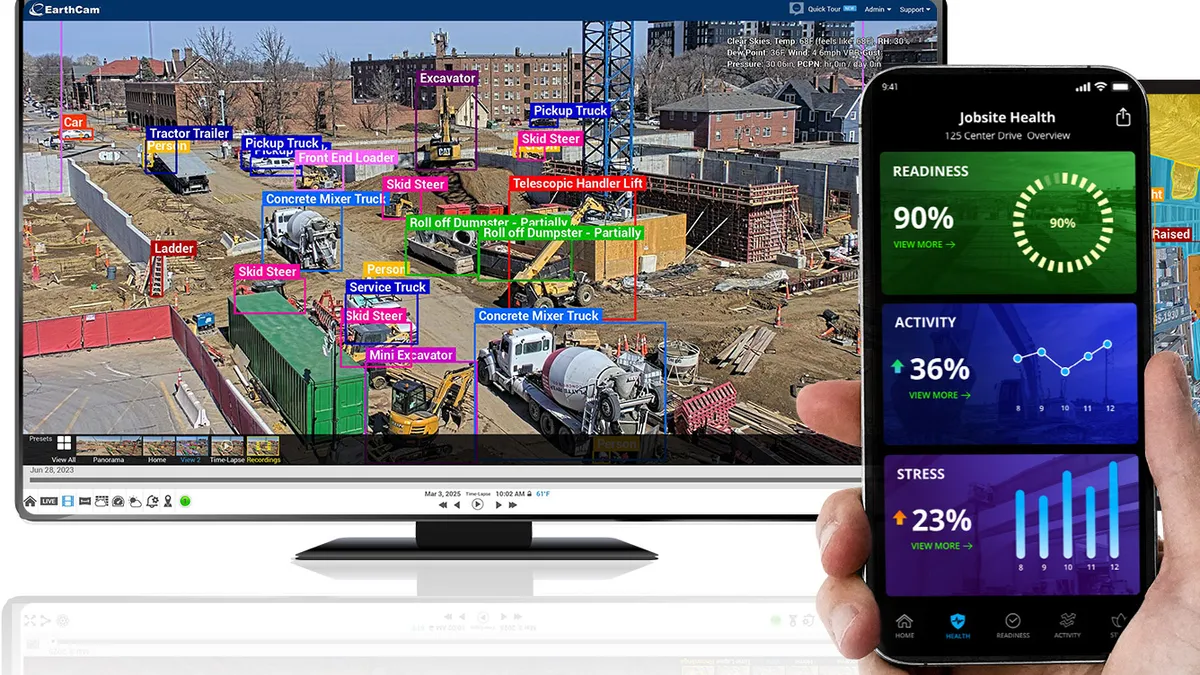Although prefabrication isn't a new building method, recent advancements have renewed the spotlight on its enhanced capabilities. Where designs were once limited and often conjured up images of industrial big boxes, prefab can be easily customized and is relevant for many applications, including healthcare and hospitality. As it has in most realms, technology is a major driving force behind prefab's maturation.
Magued Eldaief is CEO of BIM hardware and software technology company Prescient, which produces software that captures structural and engineering details to be built onsite and transforms them into detailed, 3-D virtual models early in the prefabrication design process. The software automatically plugs in the architect’s design and communicates architectural schematics to manufacturing robots that form and weld parts. Each part then is printed with a unique QR code to streamline identification and sequencing through subsequent production phases.
Eldaief recently shared with Construction Dive his perspective about how digitalization is affecting prefabrication and how it will continue to foster more advancements.
Q: Why is prefabrication gaining in popularity?
ELDAIEF: As technology propels the world into an increasingly digital space, the traditionally resistant-to-change construction sector is being rapidly modified as digital tools are allowing for faster and more precise completion of projects. These technological advances in both software and hardware are allowing companies on the cutting edge to employ robotics and lean manufacturing techniques to punch, dimple and cut building materials to precise measurements for pre-assembly before a component arrives on the work site.
The precision, speed of assembly and elimination of onsite waste unlocked by prefabrication increasingly appeals to project owners looking to not only shorten project timelines, but also improve a project’s bottom line. Prefab is being utilized to create jobsite efficiencies and improve a project’s bottom line while employing cost-effective and environmentally safe construction techniques that deliver a unique and high-quality project faster than ever.
Q: Can you define what you mean by digitalization as it relates to advancing prefab?
ELDAIEF: It's the conversion of the exact structure and engineering details into a fully detailed, 3-D virtual model via building information modeling (BIM) software. This digital model is then used to plan, design, coordinate and value engineer a project in its earliest stages, enabling true BIM. Software integrates every stage of design, from layout to creation of the building’s structural model. Component structural performance is built into the software, so engineering the building's structure is automatic. Software is then able to calculate the most efficient component layout, laying out all prefabricated structural elements.
Q: How have digital advancements help progress prefab to date?
ELDAIEF: BIM provides the ability to create a 3-D building plan and combine it with a construction schedule, paving the way for prefabrication. A key benefit of BIM is enabling the increased use of prefabrication and modularization, which in turn improves worksite productivity and overall project ROI. We think of BIM as a five-dimensional platform where you have your 3-D coordinates but also the dimension of cost and schedule for all building components.
Computer-aided design (CAD) and computer-aided manufacturing (CAM) allow construction to begin before the design is fully complete, allowing building components to be prefabricated in a factory or offsite.
From the earliest stages of the design process to the finished structure, digital technologies are beginning to bring greater efficiency and scalability to the construction industry. Digital construction technologies such as BIM software, CAD to CAM and robotics are disrupting the entire sector and paving the way for several advanced trends to gain popularity within construction.
Q: Prefab projects sometimes have the connotation of being very industrial looking and boxy. How can you dispel that myth and help educate people that prefab can create unique, aesthetically pleasing buildings?
ELDAIEF: Standardization is the key to the speed, efficiency and precision of manufacturing processes, but it’s crucial to know that standardization refers to the product process and not to the buildings themselves. While standardization unlocks the speed, efficiency and precision of manufacturing processes, these processes still yield diverse and unique final products.
With the ability to accommodate different types of units in the design process, prefab still enables architects the flexibility and freedom to be as creative as they’d like in the design of the building. This means that not every prefabricated project looks the same or like the cookie-cutter projects of years past. The digitization of the construction industry has unlocked the ability to create unique and architecturally challenging buildings using prefabrication.
Q: Looking forward, what are the digital trends that will further shape prefab?
ELDAIEF: I would envision that we will see more automation and robotics at project sites to drive the digital thread into project execution with CAA (computer-aided assembly). This would not only enhance site productivity but would also eliminate human safety concerns. I believe 3-D printing will also play a big role as the cost and the limitations of that technology evolve.
Q: How can digitalization in construction continue to move forward?
ELDAIEF: The current approach of designing and building that prevails in our industry will have to change to enable the full benefits of digitalization and advancing prefab. The linear approach of how stakeholders interact today, where the owner hires the architect and the general contractor, the architect hires the engineer and, in turn, the trades, is far from efficient. Looking beyond the legal and insurance rationales, what sticks out is that the parties are neither connected nor properly aligned toward delivering a successful project, on time and on budget.





















